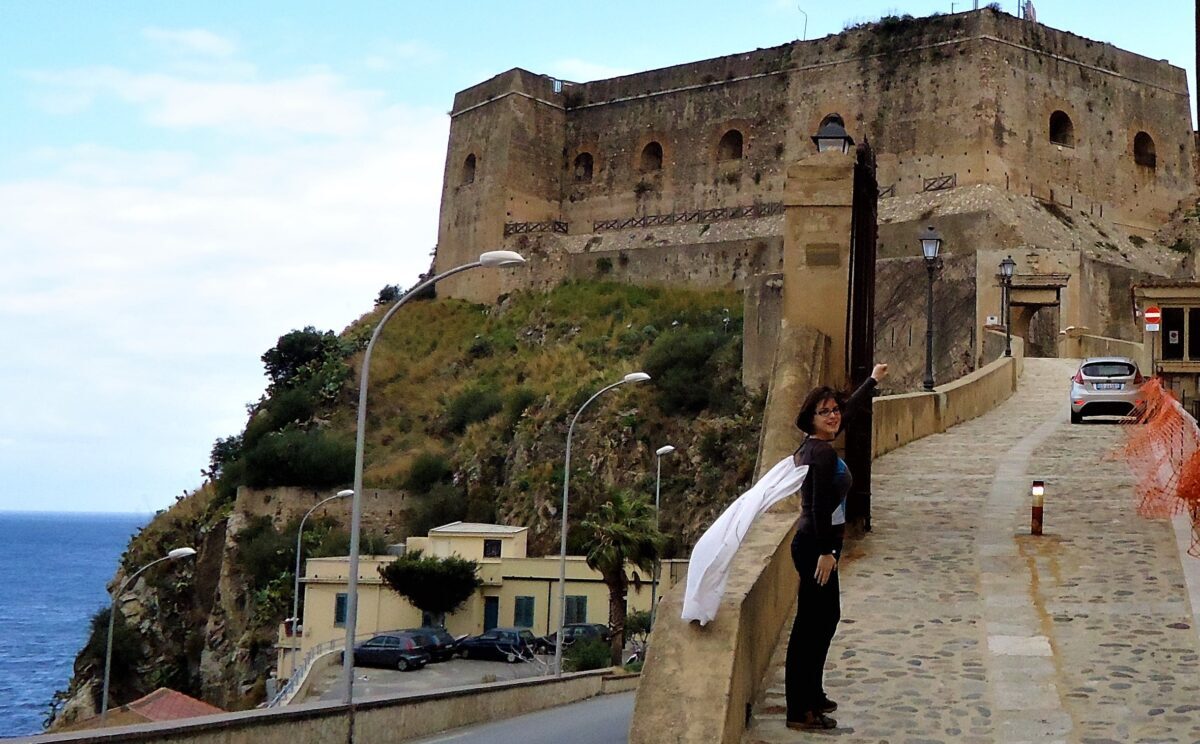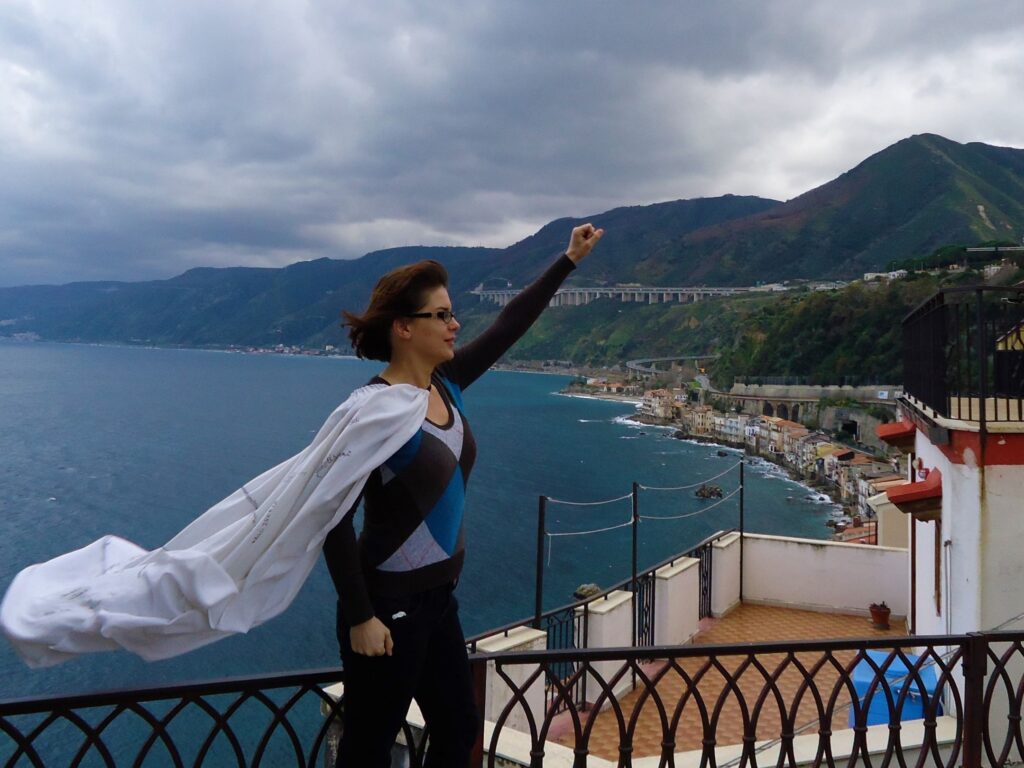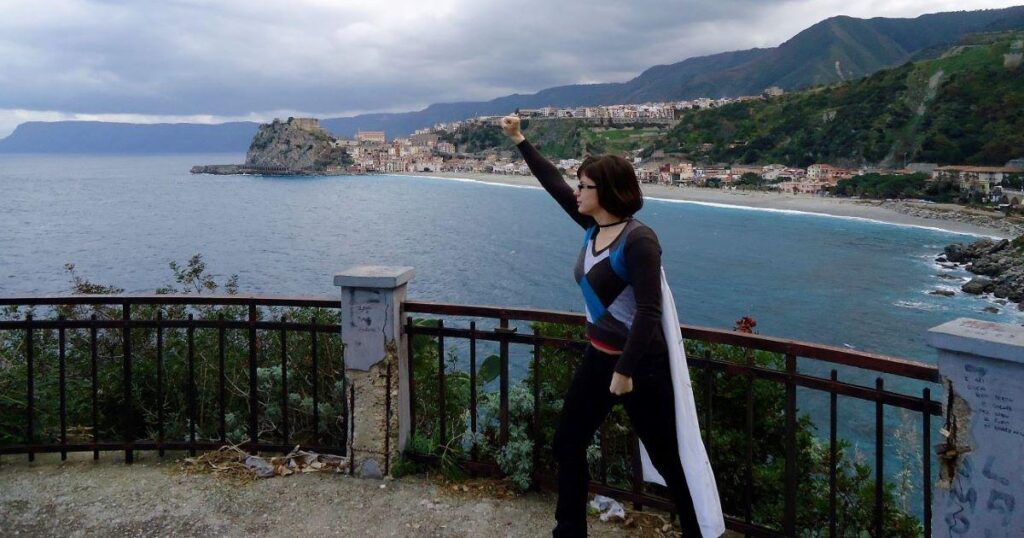Between Scylla and Charybdis: Where is it really?


Talking about places: Between Scilla and Cariddi
In this picture, I am standing above the town of Scilla (pronounced “Sheel-lah”). It is in the tip of the Italian boot, on the Calabrian shores of the Strait of Messina.
Does the name sound strangely familiar? The town got its name from the monster of Greek mythology, Scylla. The creature appears in an ancient masterpiece of world literature.
[One of the rocks] reaches heaven and its peak is lost in a dark cloud. […]
In the middle of it, there is a large cavern, looking West. […]
Inside it, Scylla sits and yelps with a voice that you might take to be that of a young hound, but in truth, she is a dreadful monster and no one–not even a God–could face her without being terror-struck.
She has twelve misshapen feet, and six necks of the most prodigious length;
and at the end of each neck, she has a frightful head with three rows of teeth in each, all set very close together so that they would crunch anyone to death in a moment […]”
(Homer, Odyssey, Book XII, Translation: Samuel Butler)
Talking about monsters: Between Scylla and Charybdis
According to Homer, another monster, Charybdis, lives opposite Scylla. If the sailors wanted to avoid one creature, they had no other choice but to sail closer to the other one. Hence, the meaning of the idiom ˝between Scylla and Charybdis˝ is ˝choosing from the lesser evil.˝
You can find a place called Charybdis on the Sicilian side of the Strait of Messina. Now, this word is way too difficult for Italians who have a phobia of consonant clusters. Which is why, the name of the place is Cariddi. Similarly, for instance, the Italian version of Alexandra is Alessandra.
The photo shows the rock of Scilla. It is so close to the other side that in clear weather, you can see cars driving by in Messina.

The tip of the Italian boot and Sicily
To answer the question in the title, between Scylla and Charybdis, there is the Strait of Messina. (In Italian, il Stretto di Messina.) The word stretto also indicates tight or narrow, exactly like the archaic meaning of the English equivalent, strait.
Navigation in the Strait was challenging for ancient sailors because such proximity of the two landmasses created a danger of shipwrecking on either side. It is hard to tell whether the physical dangers are the origin of the myth, or the Greeks (Romans or Italians) named the places after the monsters in Odyssey. After all, we are talking about a 2800-year-old story.





Really interesting! I was actually just reading a book about Greek/Roman mythology that mentioned Scylla. I had never heard of the actual place!
This is my first time hearing about Scylla and Charybdis. Interesting history. It’s always good to know the history of a place before visiting. Thanks for sharing!
I think I’ve heard about these spots from one of my history classes at university, but I didn’t know too much about them so I found your post really interesting!
I never heard of Scylla and Charybdis. It looks so beautiful and the history. Definitely add this place to my never ending bucket list. Such a great post and so informative!
I haven’t heard about these places until now. Such a great little history lesson!
I love finding out about new places in Italy! Pinning for my next visit!
Such a great read, thanks for sharing this for people like me who don’t know a thing about these places.